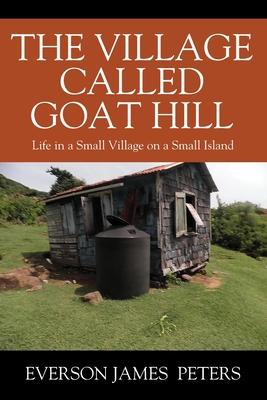During the post-emancipation through to the 21st century, the descendants of slaves had established on the small Grenadine island of Carriacou, the village of Goat Hill on marginal lands. These lands had been over-cultivated to produce indigo, sugarcane and cotton primarily for the benefit of Europeans. The plantation owners had gone, forced to give up their parasitic life on the backs of Goat Hillians' ancestors. While the people who now occupied the small village were all poor in material things, they utilised the culture of their ancestors to live in harmony with nature and with one another. The uniqueness of a village transitioning over time but anchored in the beliefs, myths, culture and the socio-economic experiences that laid the foundation of life in Goat Hill, Their basic philosophy, which is one of community, was exhibited then and now, and is often expressed in the phrase "one for all and all for one" or sometimes in a patios: "Caca Bawee for Caca Bawee." Unable to escape the effect of globalisation, the village has been able to withstand the changes, both bad and good. The village is, now a modern community, no longer experiencing material poverty but is challenged to avoid a corruption of its basic philosophy as money and politicians play on their souls and diluting those characteristics that made Goat Hill the envy of so many.Set in Carriacou, the novel captures the essence of island living from post-emancipation through to the 21st century. The characters, rituals and events recounted place the socio-cultural heritage centre stage, taking the reader back in time and bringing the discourse to life. At the same time, skilfully woven into the tapestry are the changes that propel economic advancement and the attendant challenges that threaten to erode what is sacred. In a society where cultural preservation is dependent on the oral tradition, the writer fills a documentation void and invites the younger generation and the world over to explore

The Village Called Goat Hill: Life in a Small Village on a Small Island
During the post-emancipation through to the 21st century, the descendants of slaves had established on the small Grenadine island of Carriacou, the village of Goat Hill on marginal lands. These lands had been over-cultivated to produce indigo, sugarcane and cotton primarily for the benefit of Europeans. The plantation owners had gone, forced to give up their parasitic life on the backs of Goat Hillians' ancestors. While the people who now occupied the small village were all poor in material things, they utilised the culture of their ancestors to live in harmony with nature and with one another. The uniqueness of a village transitioning over time but anchored in the beliefs, myths, culture and the socio-economic experiences that laid the foundation of life in Goat Hill, Their basic philosophy, which is one of community, was exhibited then and now, and is often expressed in the phrase "one for all and all for one" or sometimes in a patios: "Caca Bawee for Caca Bawee." Unable to escape the effect of globalisation, the village has been able to withstand the changes, both bad and good. The village is, now a modern community, no longer experiencing material poverty but is challenged to avoid a corruption of its basic philosophy as money and politicians play on their souls and diluting those characteristics that made Goat Hill the envy of so many.Set in Carriacou, the novel captures the essence of island living from post-emancipation through to the 21st century. The characters, rituals and events recounted place the socio-cultural heritage centre stage, taking the reader back in time and bringing the discourse to life. At the same time, skilfully woven into the tapestry are the changes that propel economic advancement and the attendant challenges that threaten to erode what is sacred. In a society where cultural preservation is dependent on the oral tradition, the writer fills a documentation void and invites the younger generation and the world over to explore